"A work o art has no importance whatever to society. It is only important to the individual."
So says Vladimir Nabokov. What the great Russian author meant, essentially, is that art is subjective. And he's not wrong. Art is in the eye of the beholder — which is precisely what makes it universal.
20. “Sunday Afternoon on La Grande Jatte,” Georges Seurat (1884)
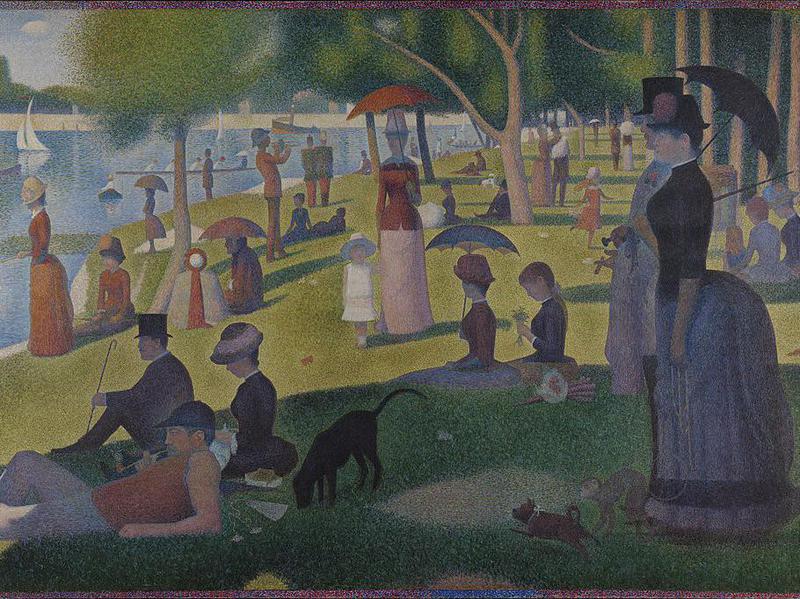
Considered to be Seurat's greatest work, this masterpiece was not always held in such high regard. When it was first displayed in Paris in the late 19th century, it was met with adjectives like “bedlam” and “scandal.”
Today, however, Seurat’s use of juxtaposed dabs of color, optical blending and scientific precision (now known as Pointillism) is considered nothing short of brilliant. The artist used Egyptian and Greek sculpture and Italian Renaissance frescoes as inspiration to evoke a sense of permanence in the painting.
He explained once to the poet Gustave Kahn, "The Panathenaeans of Phidias formed a procession. I want to make modern people, in their essential traits, move about as they do on those friezes, and place them on canvases organized by harmonies of color."
Where to See “Sunday Afternoon”
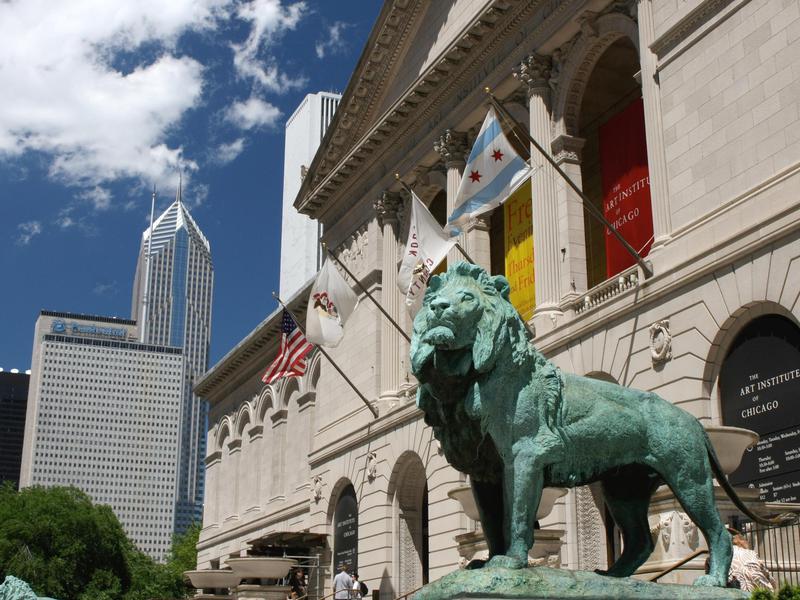
The painting is housed at the Art Institute of Chicago, one of the oldest and most important museums in the U.S., home to works by the likes of Picasso, Hopper, Monet and many other luminaries.
To stay in the neighborhood, book a room at the new Hotel Julian. Built into a 102-year-old high-rise on Michigan Avenue, the boutique hotel boasts views of Millennium Park from many of its rooms.
19. “Ecstasy of Saint Teresa,” Gian Lorenzo Bernini (1652)
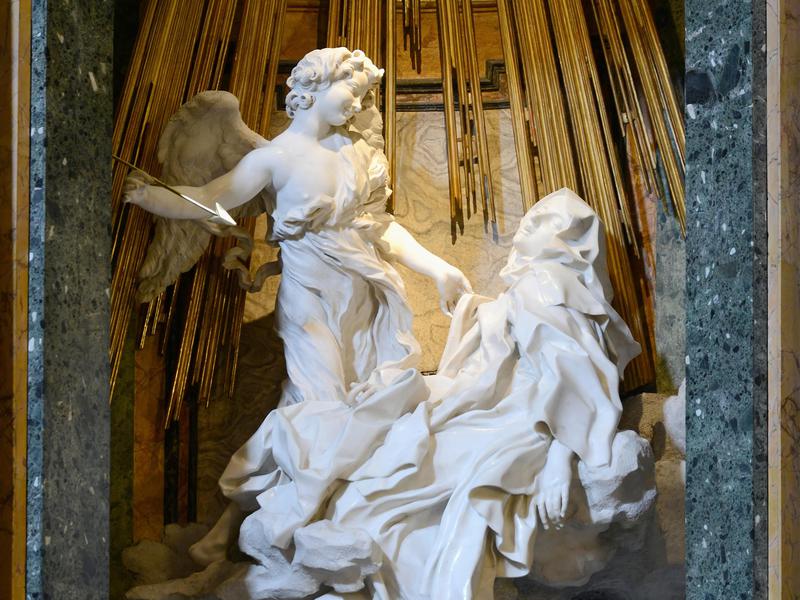
Bernini's iconic sculpture was commissioned by Cardinal Federico Corner of Venice to be a part of his burial chapel. It depicts Saint Teresa of Avila, a Spanish nun, mystic and writer during the Counter-Reformation. She was known for her writings on experiencing periodic moments of rapture, when she would feel consumed by the love of God and lifted to a place of ecstasy. Eventually she became the patron saint for the ill.
The sculpture is considered to be the pinnacle of Bernini's work, and embodies not only extraordinary sculpting skill but a flair for the theatrical. The sculpture shocks with its surprisingly explicit sensuality and raw eroticism.
Where to See “Ecstasy of Saint Teresa”

Today the sculpture can be found in the Corner Chapel in Santa Maria della Vittoria in Rome, a sacred setting that makes its erotic nature all the more striking. Santa Maria della Vittoria dates back to 1605, and features sublime Baroque architecture.
Located in one of Rome's most affluent addresses, Via Veneto, La Piccola Maison is an excellent choice for local accommodation. It lives in 19th century bones and evokes historic charm with parquet floors and Venetian glass lamps.
18. Angkor Wat, Cambodia (Early 12th Century)

One of the most important sites in all of Southeast Asia is the site of Angkor, an area that extends more than 154 square miles and consists of dozens of temples, hydraulic structures and communication routes. For hundreds years it existed as the center of the Khmer Kingdom, accented with ornately carved monuments, reservoirs and temples, among them the legendary Angkor Wat.
One of the seven wonders of the world, Angkor Wat took an estimated 30 years to build and is the largest monument of the Angkor group, and the best preserved. It is an architectural masterpiece with perfect composition, balance, proportions and sculptures.
It is believed that it was a funerary temple for King Suryavarman II, and it is positioned to the west to conform to the symbolism between the setting sun and death.
Where to Stay Near Angkor Wat

Angkor Wat is one of the prime reasons to visit the city of Siem Reap in Cambodia. It is a bucket-list destination for luxury travelers and backpackers alike, as appreciation of its beauty knows no limitations. Tip: one of the best times to see Angkor Wat is at sunrise, so get there early to secure a spot behind one of the reservoirs to catch its mirrored reflection as the sun rises behind it.
Be sure to book a room at the brand-new Treeline Urban Resort. This boutique, chic resort is Cambodian owned and designed, inspired by the Angkorian trees that line the property. Fronting the Siem Reap riverfront, the resort is designed with nature in mind, with clean lines, touches of green, brown and earth tones, and a sparkling infinity pool, all surrounded by lush vegetation. An onsite spa and noodle bar round out the experience.
17. The Elgin Marbles (447-432 BC)

Built nearly 2,500 years ago as a temple dedicated to the Greek goddess Athena, The Parthenon in Athens is one of the most revered archaeological structures of all time, known for the beautiful marble sculptures that adorned it.
Over the next millennium, the structure served as a church of the Virgin Mary of the Athenians, then a mosque, and finally the ruin that we know today. During this time the spectacular sculptures that lived there were damaged, and by the 19th century archaeologists agreed that those that survived could never be attached, and so live in museums in Greece and London.
The sculptures in London, known as the Elgin Marbles, have been on public display since 1817. Constructed by the architect and sculpture Phidias, they consist of friezes, pediment sculptures and fragmented statues from the walls of the Parthenon, as well as the northeast column, blocks of wall crown (crown molding) and various other antiquities.
Where to See The Elgin Marbles

Their shipment to England in the 19th century stirred quite a bit of controversy over ownership of cultural artifacts and the return of antiquities to their places of origin. Still, much of the Elgin Marbles can be seen at the British Museum in London.
The British Museum is one of London’s most visited attractions, so there are plenty of hotel options nearby. The museum sits between two of central London’s most important neighborhoods – Bloomsbury and Covent Garden. The Bloomsbury Hotel offers high-end comfort near the museum, and is somewhat of a historical attraction it itself. The Neo-Georgian building has 153 rooms, each with high-tech touches like Nespresso machines, iPod docking stations and heated floors in the marble bathrooms. The Club Bar harkens back to the 1920s and ‘30s with classic craft cocktails, while the Dalloway Terrace is the spot to enjoy afternoon tea.
16. “Sistine Madonna,” Raphael (1512-1513)
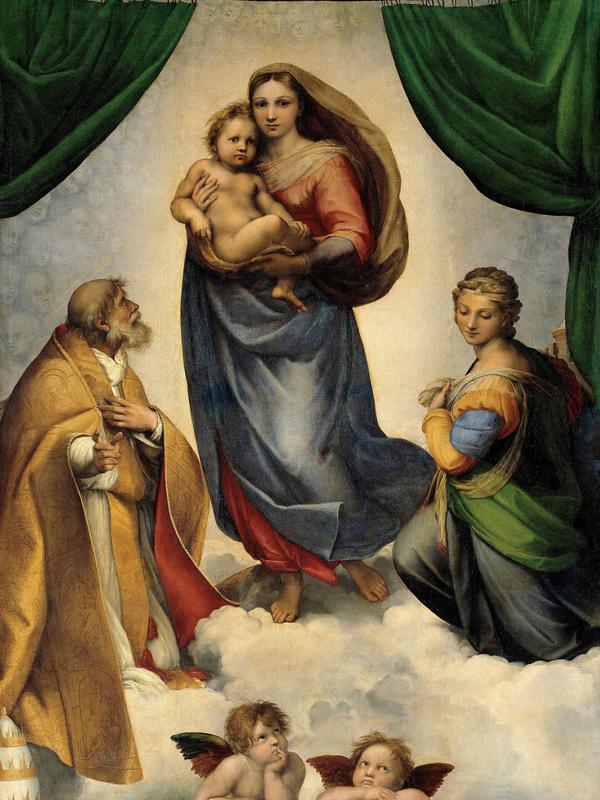
Commissioned by Pope Julius II, Raphael's Sistine Madonna is one of the most iconic works of art from the Renaissance. It depicts a vision appearing to saints in the clouds. In the center is the Virgin walking with the baby Christ in her arms. Pope Sixtus II and a kneeling St. Barbara round out the scene. The two cherubs perched at the bottom of the painting were added at the end of the process, but have become two of the most recognized figures in art history.
Where to see “Sistine Madonna”
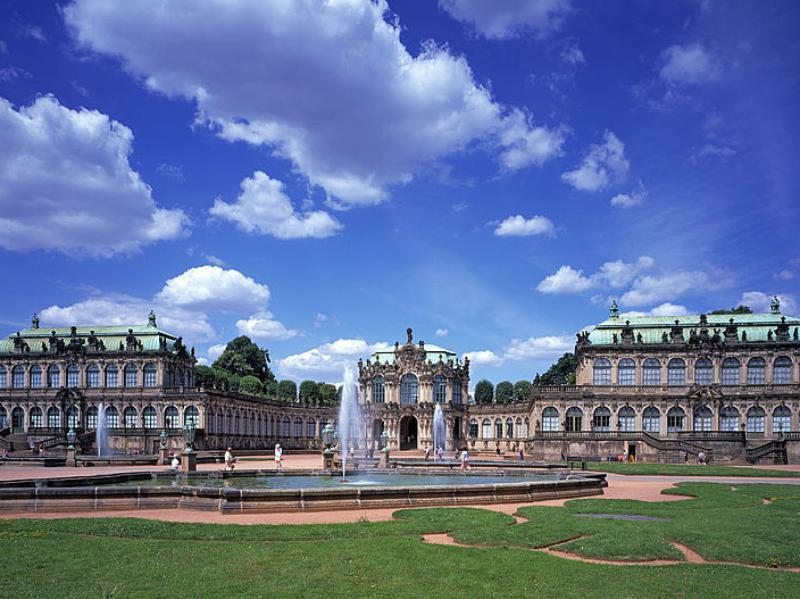
The Sistine Madonna resides within the Gemaldegalerie Alte Meister, one of the world’s finest Renaissance-era museums, in Dresden, Germany.
Want to stay nearby? Opt for one of the 58 swanky rooms at the Bulow Palais next to the Konigstrasse in the Baroque quarter of the city. It's luxury with an approachable air, meaning high quality of services and rooms without the stuffiness of a traditional European five-star. It is in a prime location for sightseeing, as well, and there is a Michelin-starred restaurant and spa on site.
15. “Le Déjeuner sur l’herbe,” Édouard Manet (1862)
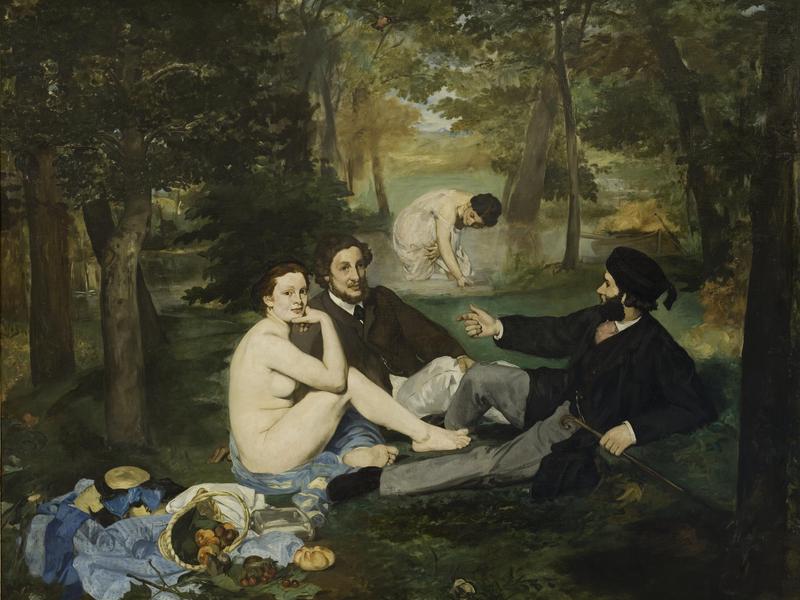
Considered to be the jumping-off point for modern art, Manet's “Luncheon on the Grass” challenged the norm of traditional art with its blatant incongruities.
A naked woman sits on the grass having lunch with two distinguished, clothed bourgeois men. It was not so much the nudity that made the painting both provocative and pivotal — it was that the woman was naked and the men were clothed, suggesting that she was not a goddess, but a prostitute.
Where to See “Le Déjeuner sur l’herbe”
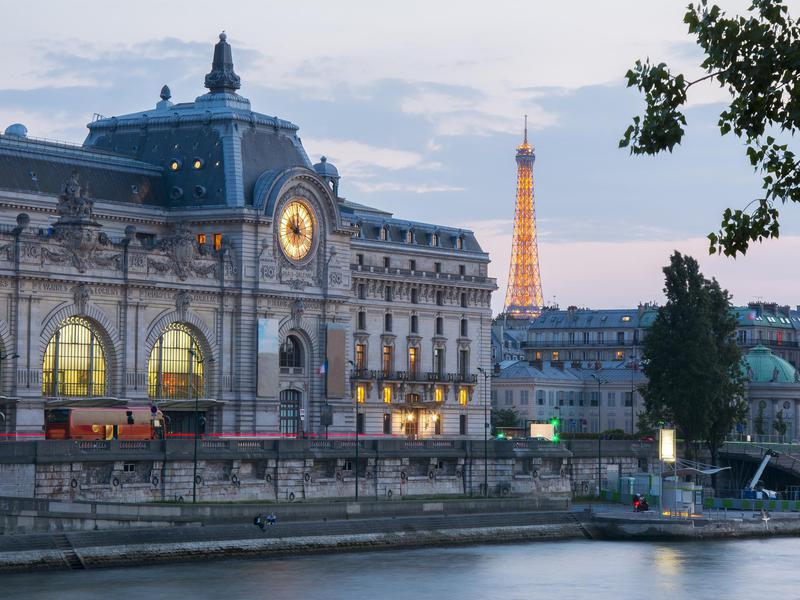
The painting can be found at the Musee d’Orsay in Paris, which contains one of the world’s foremost collections of French art — including pieces not only by Manet, but by Monet, Renoir, Degas and many other luminaries.
The Hotel de Lille, in the heart of bohemian Saint-Germain, is a short walk from the museum. The guest house dates from the 19th century and was once a resting spot for artists, writers and students. There are 15 rooms and suites, each influenced with the spirit of past creators who breathed life into Saint-German, like Miles Davis, Henry Miller, Ernest Hemingway, Simone de Beauvoir and Jean-Paul Sartre.
14. “Virgin and Child with Canon van der Paele,” Jan van Eyck (1436)

Dutch painter Jan van Eyck is known for his fascination with optical concepts and effects. His “Virgin and Child with Canon Joris van Der Paele” is one of the best examples of his work. The painting shows Van Der Paele, a canon of the Church of Saint Donation in Bruges, kneeling before the Virgin and Child. On either side is Saint George and Saint Donation.
A light source seems to be coming from the upper left on the painting, illuminating the scene within the dark interior of a church.
Where to see “Virgin and Child”
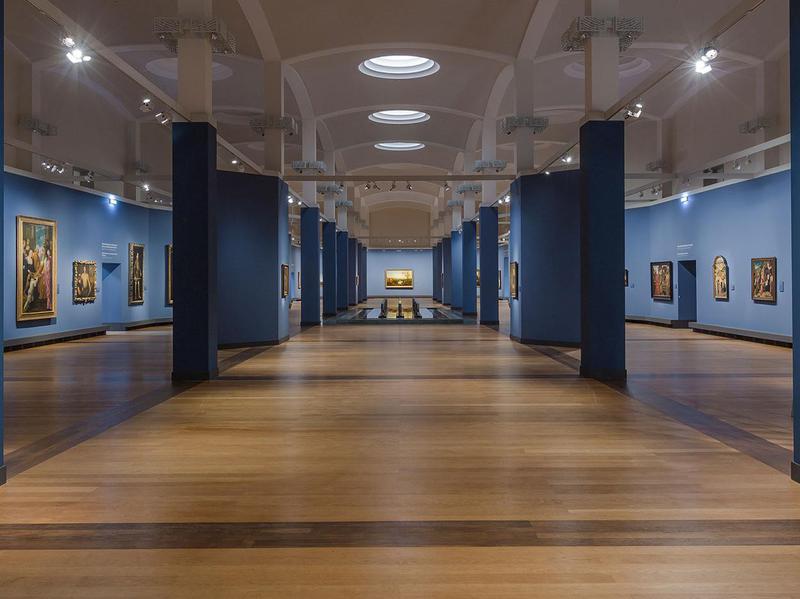
“Virgin and Child” is housed in the Gemaldegalerie, an art museum in Berlin. It holds one of the world's best collections of European paintings from the 13th to the 18th centuries.
Book a room at the Maritim proArte Hotel Berlin on iconic Friedrichstraße. The modern hotel offers free Wi-Fi, marble bathrooms, a swimming pool and a tapas restaurant.
13. Hagia Sophia, Turkey (537)

The Hagia Sophia is one of the most important and historic structures in the art world. It was the largest church constructed by the Roman Empire in Istanbul and has had three iterations throughout the centuries built on the same spot. The current structure was completed in 537 AD.
Today the structure combines the three basilica plans with the central dome. The columns are made of marble, and all the walls have been decorated with stunning mosaics made up of gold, silver, glass, terra cotta and colorful stones.
Where to Stay Near the Hagia Sophia

The Hagia Sophia is one of the top attractions in Istanbul, and is within walking distance to the Blue Mosque and Topkapi Palace. Tomtom Suites is a luxury boutique option close to the site, and a chic, comfortable option for travelers. It has 20 suites and a rooftop terrace with views of the old town, all housed in a century-old historic building. A mediterranean restaurant offers views of Prince Island.
12. “View of Delft,” Johannes Vermeer, The Netherlands (1660-1661)

Marcel Proust once said, "Ever since I saw the ‘View of Delft’ in the museum in The Hague, I have known that I had seen the most beautiful painting in the world."
Those are some pretty strong words, and for good reason. Vermeer’s oil-painting masterpiece depicting the townscape of Delft is all about the details. In addition to perfectly capturing the natural light for that time of day (the clock on the tower says 7 o'clock), Vermeer painted 15 figures, six dressed according to their social standing, and mixed grains of sand into the paint to achieve a magnificent texture and 3D effect.
The “View of Delft” was also done through camera obscura, a natural optic phenomenon that occurs when an image is projected through a small hole and reversed and inverted.
Where to See the “View of Delft”
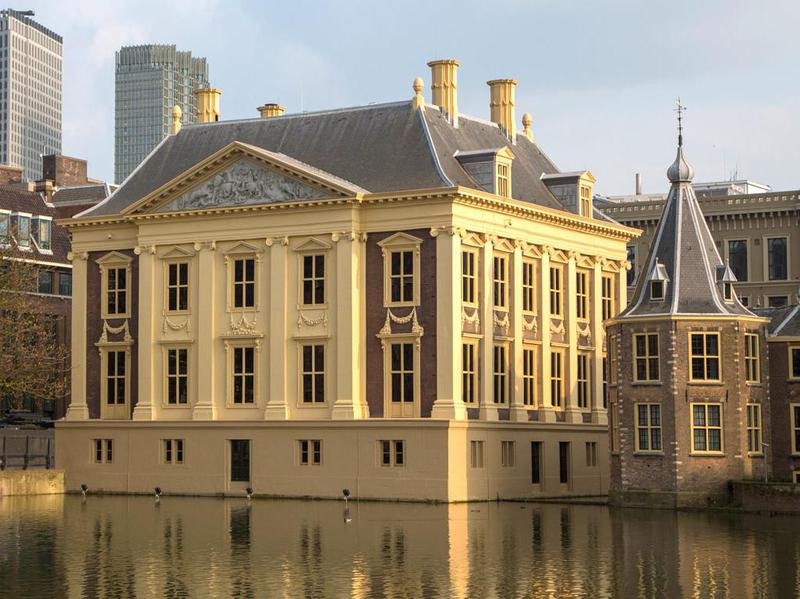
The “View of Delft” is on display at the Mauritshuis museum at The Hague. The Hague is the seat of the Netherlands' parliament and home to the royal family. Its green streets are flanked with historic buildings, cafes, palaces and embassies.
For a lovely boutique-hotel experience, opt for The Paleis Hotel in the center of town. Cozy rooms feature romantic decor, and the Mauritshuis is a quick walk away.
11. Taj Mahal, India (1632)

One of the most iconic landmarks in the world, everyone can close their eyes and picture the Taj Mahal. Seeing this UNESCO World Heritage Site (and one of the World's Wonders) in person, however, is an entirely different experience. One of the world's greatest pillars to eternal love, the Taj Mahal is a mausoleum built entirely out of marble and bedazzled with semi-precious stones. It is the eternal resting place of the Queen Mumtaz Mahal and her King, Shah Jahan.
Known for its perfectly constructed proportions and mesmerizing geometrical patterns, as well as its lush and perfectly sculpted gardens and fountains, this historic monument is a truly unforgettable work of art.
Where to Stay Near the Taj Mahal
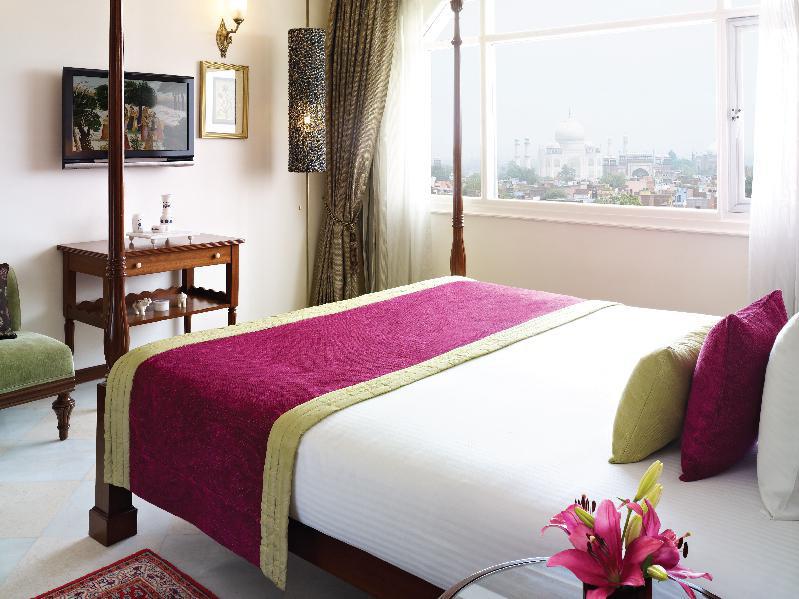
The Taj Mahal lives in Agra, India, on the banks of the River Yamuna. It draws nearly 8 million visitors per year.
Visiting the Taj Mahal will be an overwhelming experience, not only because of its magnificence, but also because of the hordes of crowds who visit it. So it's best to have a hotel close by, and one that is comfortable, so you can maximize your time at the monument. Just a half mile from the Taj Mahal is The Gateway Hotel Fatehabad Road. This luxury hotel offers views of the Taj Mahal from most of its rooms.
10. “Les Demoiselles d'Avignon,” Pablo Picasso (1907)

When it comes to the school of Cubism, there is no more iconic painting than Picasso's “Les Demoiselles d'Avignon.” Using what would become his trademark style, Picasso threw the rules of traditional form out the window and instead used distortion and geometric forms to portray the female body. Before debuting this iconic piece of art, Picasso famously prepared with hundreds of sketches and studies.
In 2007, “Newsweek” dubbed this painting the "most influential work of art of the last 100 years."
Where to See “Les Demoiselles d'Avignon”
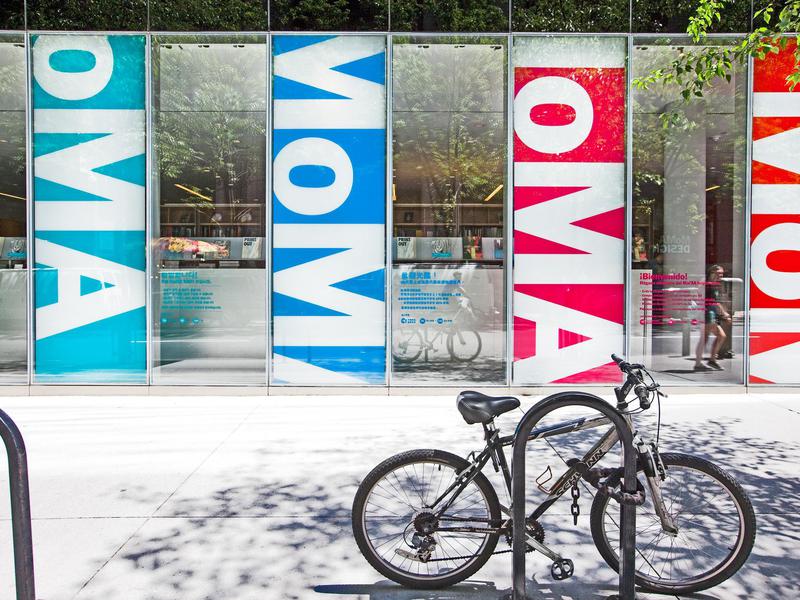
Picasso’s masterpiece can be seen at the Museum of Modern Art in New York, which is home to two other legendary Cubist paintings as well: Picasso’s “Ma Jolie” and Georges Braque’s “Man with a Guitar.”
Looking to stay in close proximity to these classics? The Kimpton Hotel Eventi near Herald Square has been recently revamped, and features its own impressive rotating display of art. Other amenities include an in-house spa, an outdoor plaza that boasts a big screen for movies, and a lovely outdoor veranda overlooking 6th Avenue.
9. “Saint Mark,” Donatello (1411-13)
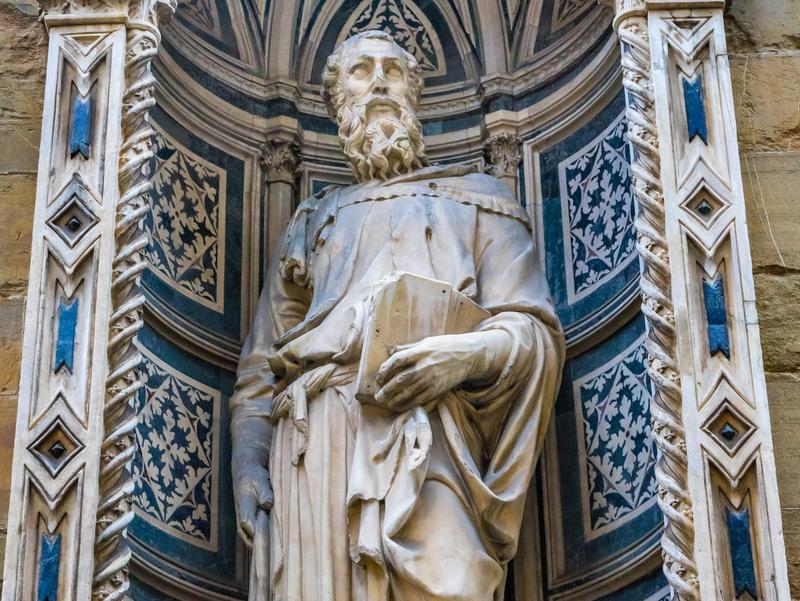
Created by master sculptor Donatello, the “Saint Mark” statue is one of his most famous. Made completely of marble, the towering artifact is intricately carved and stands at more than 7 feet, 9 inches tall.
Details go so far as to portray the layers of the figure’s robes and the veins in his hands.
Where to See "Saint Mark"
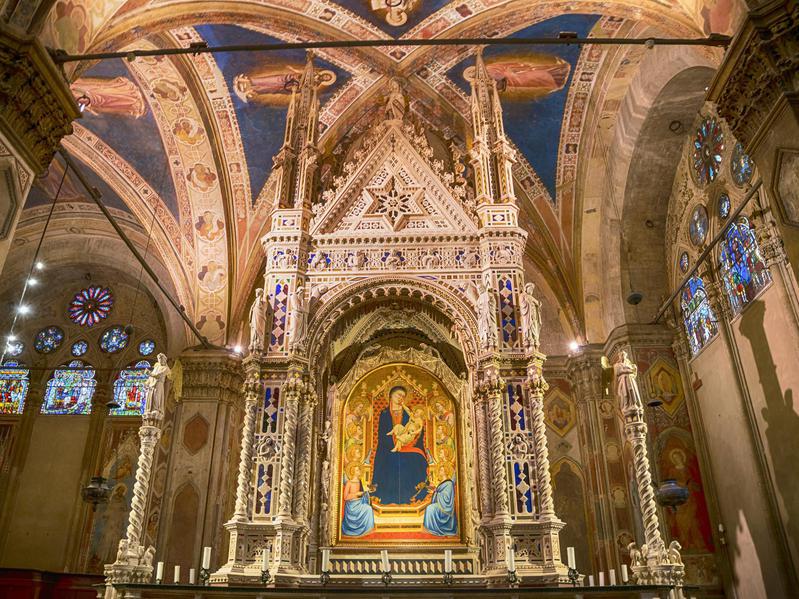
The original “Saint Mark” stands inside the Orsanmichele church in Florence, which would be worth a visit even if it didn’t house an artistic masterwork. The church is located in a former grain market, and dates back to 1337.
Want to stay nearby? B&B Dell'Olio, in Florence's historic district, is a charming and minimalist-style B&B, just a stone's throw from Piazza del Duomo. The bones of the hotel date to the 18th century, when it housed the Albergo dell'Aquila Nera hotel, a spot frequented by Mozart and his family.
Round out your trip by checking out other astonishing works in the artistic mecca of Florence, including “The Florentine Pieta” and “The Slaves” by Michelangelo.
8. Borobudur, Indonesia (8th Century)
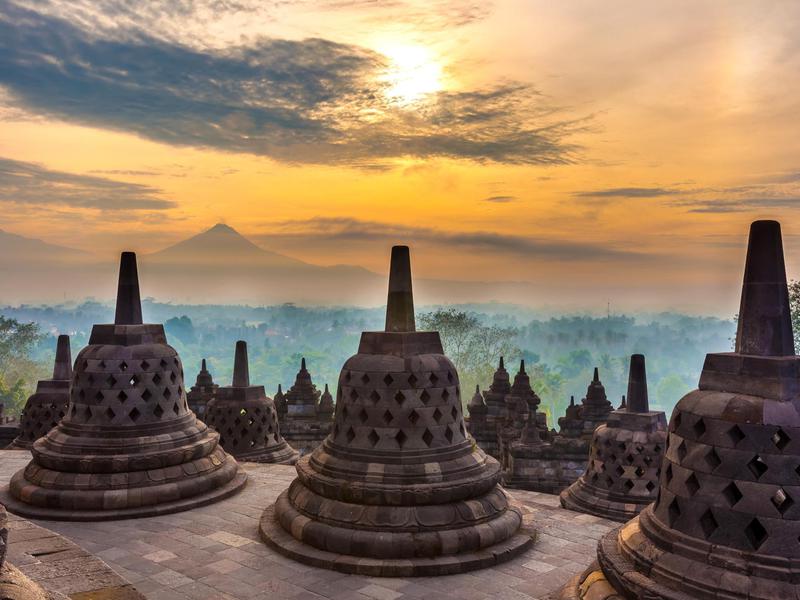
The Borobudur Temple Compounds is a famous Buddhist temple on the island of Java in Indonesia. Circular platforms are surrounded by 72 stupas, each with its own Buddha statue.
The UNESCO World Heritage Site was built in perfect accordance with the conception of the universe, according to Buddhist cosmology, and reveals the blending of the ideas of ancestor worship and the concept of attaining Nirvana. Three monuments sit on the compound, namely the Borobudur Temple and two smaller temples, Mendut Temple and Pawon Temple.
It was used until the 15th century, when it was abandoned. It was later rediscovered in the 19th century.
Where to Stay Near Borobudur

Borobudur can be found on the island of Java in Indonesia, which is one of the larger, more developed islands. For those who want to stay near the temple, Villa Borobudur Resort is a wonderful luxury hotel that combines culture, nature and art. Villas and suites are tucked into lush jungle, and each is inspired by the temple itself. Villas are decorated with beautiful earth tones and pops of bright color, and some even have private plunge pools.
7. Camera Picta, Andrea Mantegna (1465-1474)
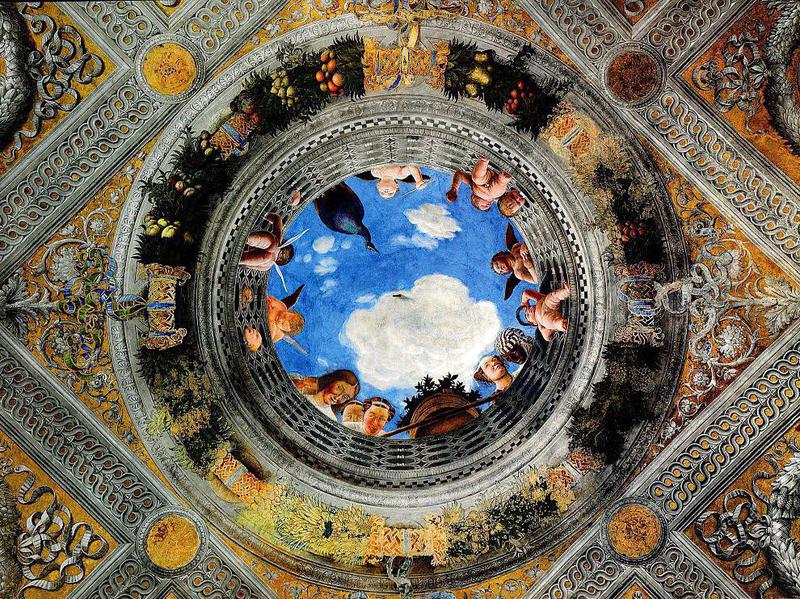
The Camera Picta, also known as the Camera delis Sposi, is a room in the Ducal Palace that’s strewn with stunning frescoes featuring illusionistic paintings by Andrea Mantegna.
Illusionistic painting is a technique where the artist creates a work that seems to share the physical space with the viewer. Rather than looking inward onto a scene, it’s as if the viewer is immersed in it. The technique is used to particularly extraordinary effect on the ceiling of the Camera Picta, featuring a brilliant blue sky.
This is one of the earliest-ever illusionistic ceiling paintings, and it remains among the most revered.
Where to See the Camera Picta

The Ducal Palace, where the frescoes can be found, is located in Mantua, Italy, a romantic, lake-fringed town located about 60 miles outside Venice. Though other Italian cities garner more attention for their cultural scenes, Mantua was an artistic hub during the Renaissance and is home to many other spectacular frescoes, paintings and sculptures.
Stay near the Ducal Palace at Hotel Casa Poli, a contemporary design hotel with clean lines, earth tones, pops of color and geometric furniture.
6. “Mona Lisa,” Leonardo da Vinci (1503-1519)
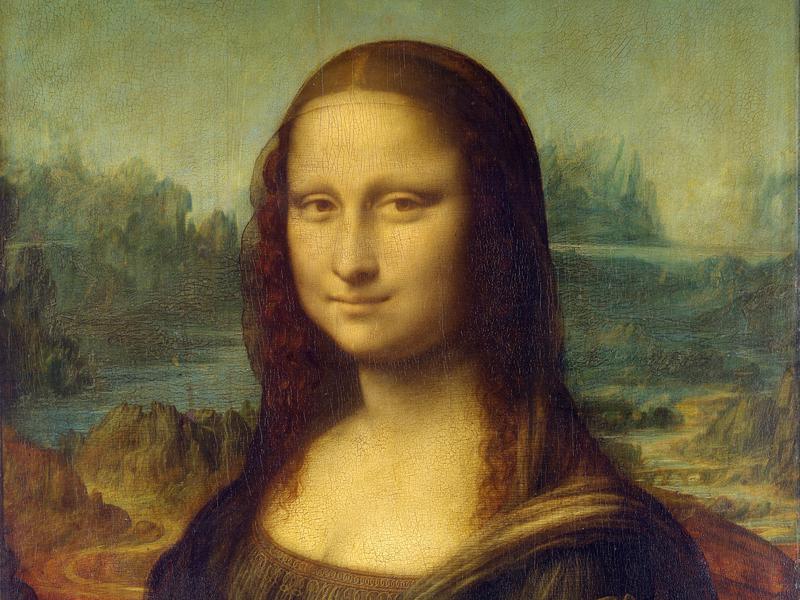
Perhaps the world's most well-known (and hotly debated) work of art, the “Mona Lisa” is the masterpiece of Leonardo da Vinci. Painted sometime between 1503 and 1519, when da Vinci was living in Florence, it is famous for being so alluringly enigmatic.
No one knows who the woman in the painting is, or what exactly she’s half-smiling about. Theories have been tossed around for centuries (is it a feminized self-portrait? Leonardo’s mother?), but none have ever been proven.
In any case, this is one of the most visited, written about, sung about and talked about artworks of all time.
Where to See the “Mona Lisa”
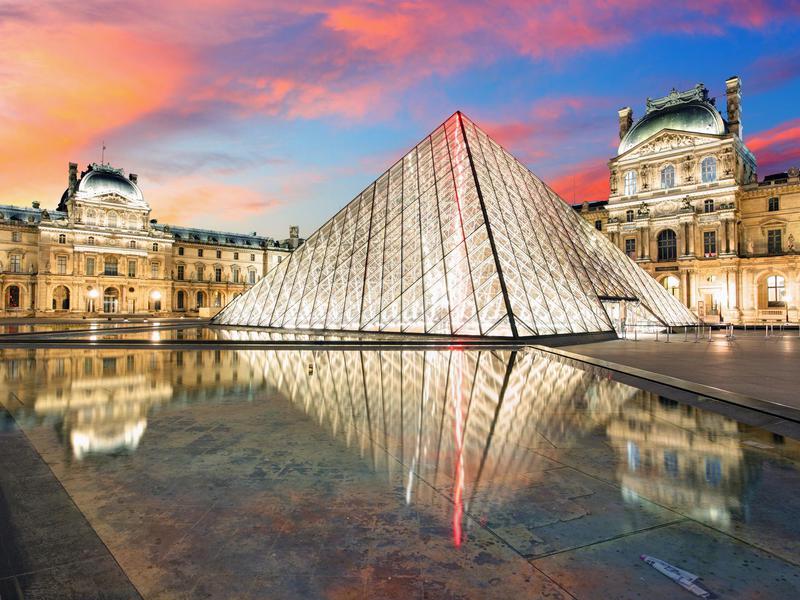
The “Mona Lisa” lives at the spectacular Louvre in Paris, France, the largest art museum on the planet. One note of caution: though the Louvre houses an embarrassment of artistic riches, the “Mona Lisa” is most popular all, and can become swarmed with visitors. Try to go during Paris’ off season, November to March.
Stay at Le Roch Hotel and Spa, a boutique city hotel overlooking the Rue Saint-Roche. This street, festooned with Paris' classic wrought-iron balconies, leads directly to the Louvre.
5. “The Nightmare,” John Henry Fuseli (1781)
When Fuseli's “The Nightmare” was first exhibited to the public at the annual Royal Academy exhibition in London in 1782, it became an icon of horror. That reputation has sustained through to today.
The highly sexual painting has been the subject of debate for centuries, as to what its true implications are, with a woman strewn over a bed in distress (or ecstasy) as a devilish imp sits on her chest.
No one knows the true meaning behind “The Nightmare,” but what is known is that Fuseli wanted to intrigue the audience. Mission accomplished.
Where to See “The Nightmare”
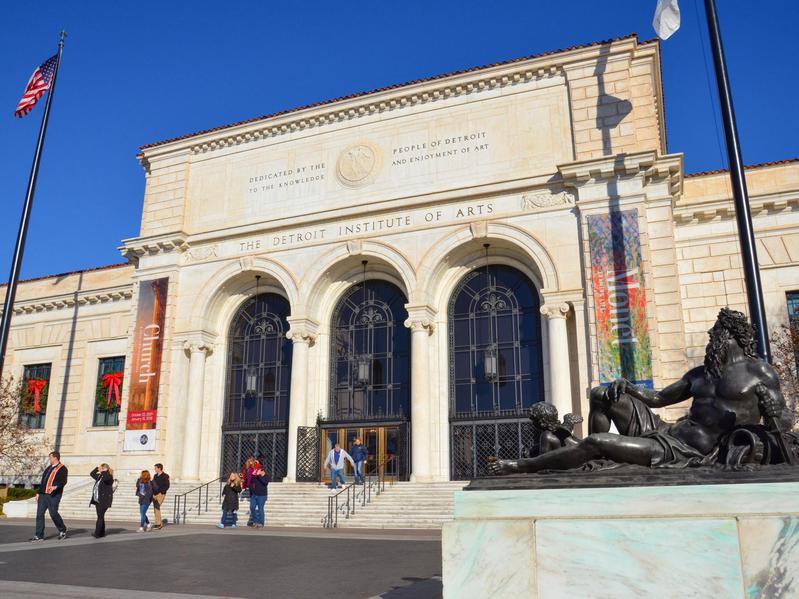
The painting is housed in the Detroit Institute of Arts in Michigan, one of the most extensive artistic centers in the U.S., home to masterworks by legends like Andy Warhol, Georgia O’Keeffe and Dale Chihuly.
Nearby, The Inn on Ferry Street is one of the more unique places to stay in Detroit. The property is comprised of four restored Victorian mansions and two carriage houses, and features distinctly flavored guest rooms throughout.
4. The Forbidden City, Beijing (1420)
One of China's most impressive palaces, the Forbidden City is considered to be among the world's top five most important palaces of all time. It is a must-see for any first-time visit to China, and certainly a work of art in its own right. The world's largest imperial palace complex occupies 7.75 million square feet, making it three times larger than the Louvre in France. It took approximately 1 million workers to complete the structure.
Inside, the complex has more than 90 quarters and courtyards, 980 buildings and over 8,728 rooms. It is the world's largest collection of well-preserved medieval wooden structures, and every detail reflects features of traditional Chinese architecture. Twenty-four Chinese emperors lived here over the time of the Chinese dynasties.
Inside the Palace Museum is a first-rate collection of Chinese historical artifacts spanning thousands of years of Chinese history. It is considered to be one of the best museums in the world.
Where to Stay Near the Forbidden City
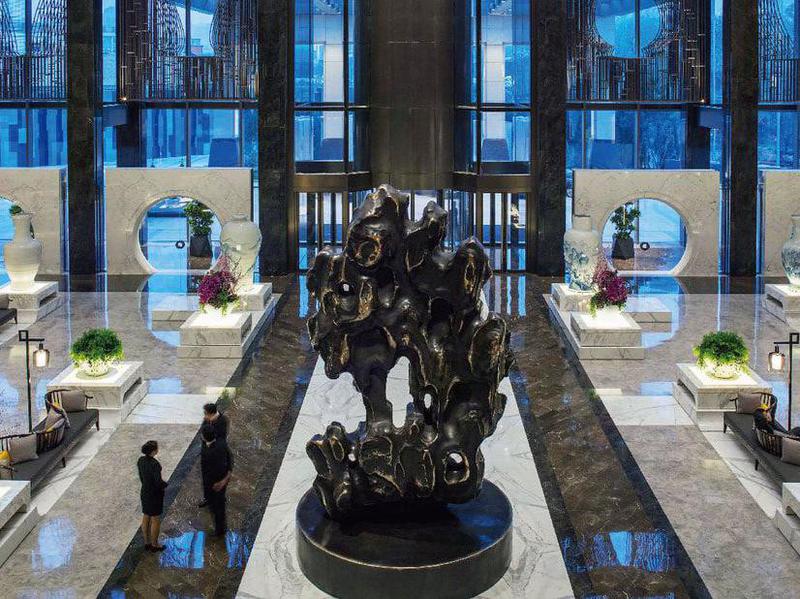
The Forbidden City is located in Beijing, which is one of China’s most populous and modern cities. A frenetic, dynamic city, Beijing is a perfect snapshot of what makes China so fascinating — old world tradition sitting side by side with cutting-edge modernity, from towering skyscrapers to centuries-old hutongs (historic neighborhoods veined with tiny alleys and traditional shops and restaurants).
A French-orient architectural gem houses the Beijing Hotel NUO, which blends traditional charm and priceless antiques with modern amenities like pampering spa services. The hotel is a 20-minute walk from the Forbidden City and Tiananmen Square, and less than an hour from the airport. East 33 Restaurant serves an international buffet, while Jaan Restaurant offers French dishes and an extensive wine list.
3. “Impression, Sunrise,” Claude Monet (1872)

“Impression, Sunrise” is credited with moving the art world into the Impressionist era of painting. Created from a scene in the port of Le Havre, France, Monet paints a hazy background, obscured by mist, with pops of orange and yellow depicting the setting sun, casting shadows across dark boats.
Original viewers of the work claimed that they were not able to recognize what was being depicted at all, as this style was nothing like they had ever seen before.
Where to See “Impression, Sunrise”
Fittingly, the painting can be found at an entire museum devoted to the works of Monet: The Musee Marmottan Monet in Paris. The museum boasts the world’s largest collection of its namesake’s works, plus other paintings by the likes of Gaugin, Manet and Morisot.
Not far away, modern meets baroque at MonHotel Lounge & Spa in the 16th arrondissement. The property is housed in a 1906 building bedecked with photos of old Hollywood glamor.
2. “The Starry Night,” Vincent van Gogh (1889)
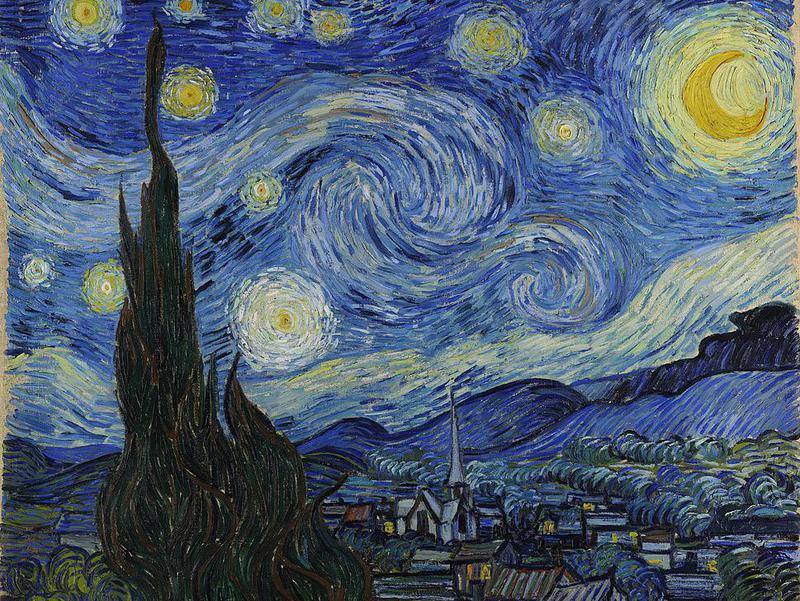
Largely self-taught, Vincent van Gogh produced more than 2,000 paintings, watercolors, drawings and sketches over the course of his lifetime. And none is more famous than “The Starry Night,” featuring an explosive, expressive night sky, filled with intense swirling patterns, bright orbs and the crescent moon with Venus.
The painting is also notable for where it was painted: in a room at the Saint-Paul asylum in Saint-Remy, France, where van Gogh stayed while recovering from mental illness and his ear amputation.
Where to See “The Starry Night”

Like Picasso’s “Les Demoiselles d'Avignon,” “Starry Night” is on display at the Museum of Modern Art in New York, where it lures throngs of revelers. Go on a sunny day to avoid New York City’s massive rainy-day museum crowd.
1. Sistine Chapel Ceiling, Michelangelo (1508-1512)
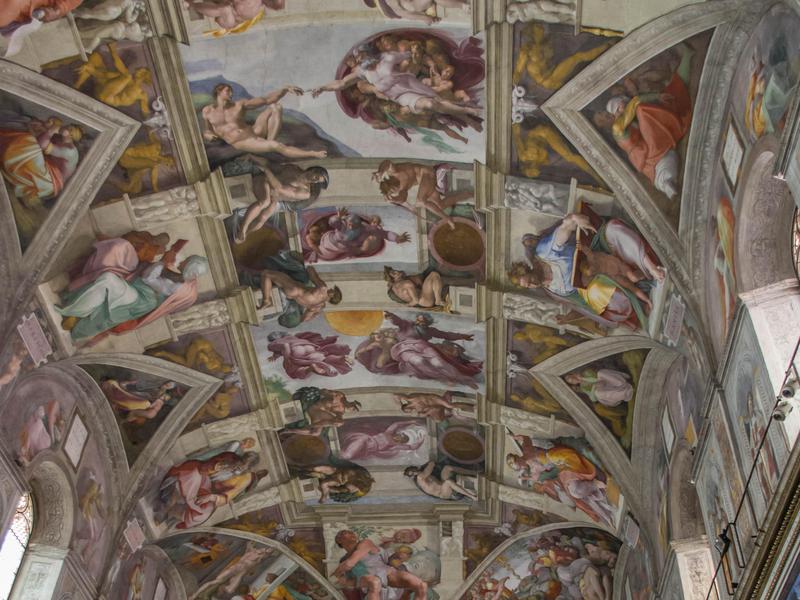
One of the most visually stunning painted interior spaces in the world, this masterpiece by Michelangelo blankets the ceiling of one of the chapels in the Vatican.
In 1508, Pope Julius II commissioned Michelangelo to paint the ceiling. Not known for his work as a painter (he was heralded for his stonework like “David” and “La Pieta”), Michelangelo nevertheless took on the task, and the rest is art history. The sequence of paintings begins with Creation and moves to the story of Noah. But the two most important and famous scenes are his frescoes of the Creation of Adam and the Fall of Adam and Eve/Expulsion from the Garden.
The Sistine Chapel was designed to be the gathering place for cardinals selecting a new pope - a purpose it still serves today.
Where to See the Sistine Chapel Ceiling
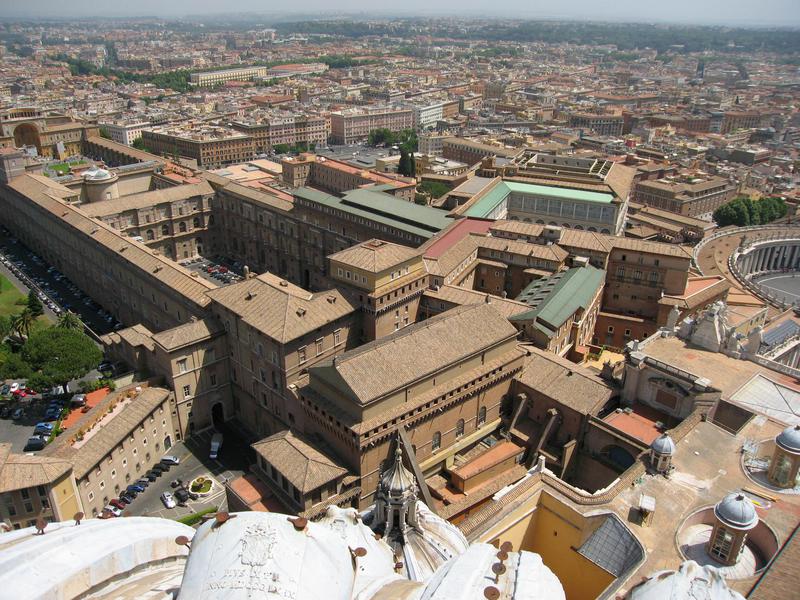
The Sistine Chapel's ceiling is one of many extraordinary sights in Vatican City, which boasts 54 art galleries, including a particularly impressive collection of Renaissance works.
For a luxe B&B stay just a stone's throw from the Sistine Chapel, consider Vatican Chic. Housed in a historical building just behind the Vatican’s museums, the B&B is clean and modern, with elegant and comfortable guest rooms.
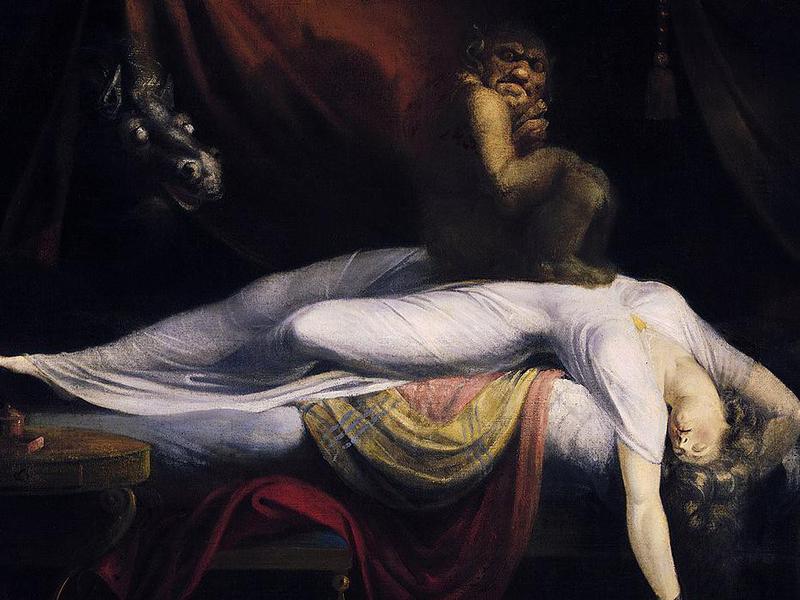
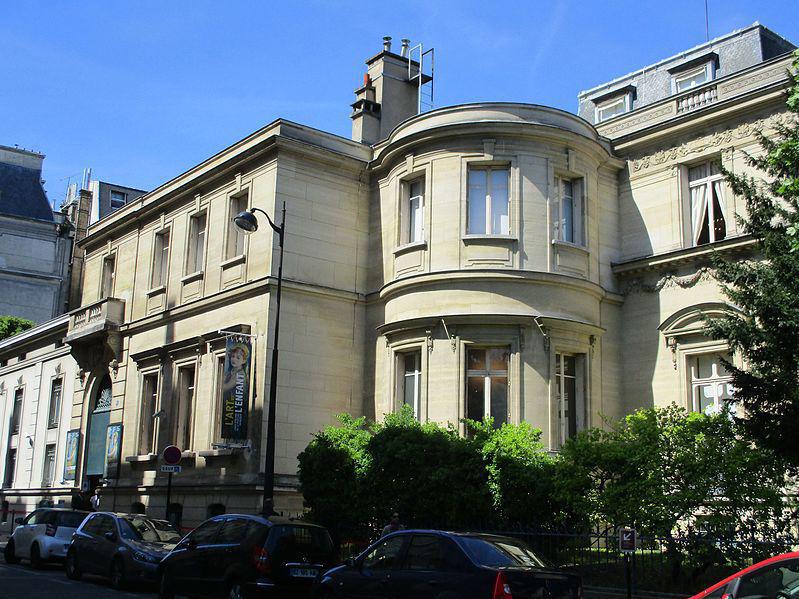
Sem comentários:
Enviar um comentário